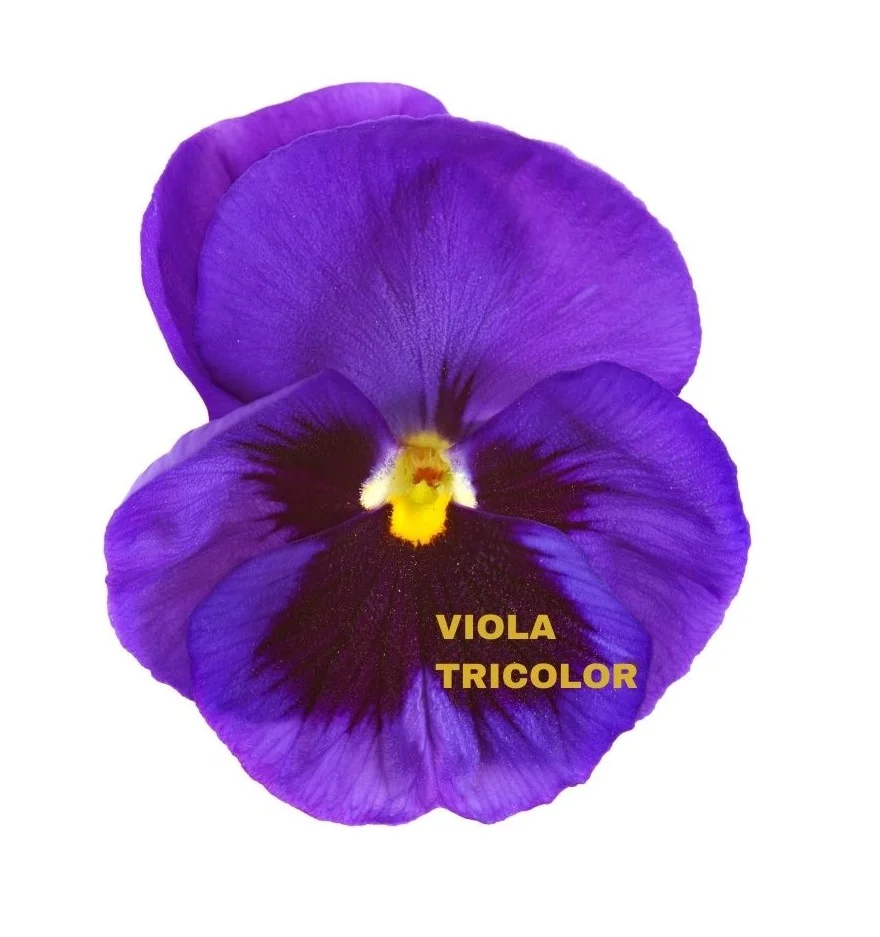Viola tricolor, commonly known as Pansy, is not only a charming garden flower but also a valuable remedy in homeopathy.
With its origins in Europe and western Asia, this delicate plant has captivated hearts for centuries with its vibrant hues and unique markings.
Beyond its ornamental beauty, Viola tricolor offers therapeutic benefits, particularly in treating conditions such as eczema, urinary issues, and male reproductive concerns.

Table of Contents
ToggleSOURCE INFORMATION
Origin and Distribution
- Viola tricolor is native to Europe and western Asia but has been introduced and naturalized in various regions around the world.
- It grows naturally in meadows, fields, gardens, and other open areas, preferring moist, well-drained soils and partial shade.
History
- Pansies have a rich history dating back centuries, with their cultivation and appreciation documented in various cultures.
- The name “pansy” is derived from the French word “pensée,” meaning “thought,” and has been associated with love, remembrance, and admiration.
- Pansies have been cultivated for their ornamental beauty and have been a popular choice for gardens, borders, and floral arrangements.
- Historically, pansies were believed to have medicinal properties and were used in herbal remedies for various ailments.
Cultural Significance
- Pansies hold cultural significance in many societies, often symbolizing love, affection, and admiration.
- In Victorian England, pansies were associated with sentimental love and were often exchanged as tokens of affection.
- Pansies have also been used in literature, poetry, and art as symbols of beauty, youthfulness, and fleeting emotions.
Botanical Description
- Viola tricolor is a low-growing perennial plant with a spreading habit.
- It features characteristic heart-shaped leaves and distinctive five-petaled flowers with a variety of colours, including purple, yellow, white, and combinations thereof.
- The flowers often have dark markings or “faces” resembling those of a human profile, adding to their charm and appeal.
Cultivation and Uses
- Pansies are widely cultivated as ornamental plants in gardens, parks, and landscapes.
- They are valued for their long flowering period, vibrant colors, and ability to tolerate cooler temperatures, making them popular choices for spring and fall planting.
- Pansies are also used in culinary applications, such as decorating cakes, salads, and desserts, although they are primarily grown for their aesthetic value.
DRUG PATHOGENESIS
- Viola tricolor primarily affects the skin, urinary system, male reproductive organs, and throat.
- It is indicated for conditions such as eczema, impetigo, itching, urinary issues with a cat-like odour, swelling of the prepuce, and involuntary seminal emissions.
KEY CHARACTERISTICS
- Heavy, pressing-outward head pain.
- Eczema of the scalp with swollen glands.
- Face becomes hot and sweaty after eating.
- Difficulty swallowing due to excessive phlegm.
- Copious urine with a disagreeable odour.
- Swelling of the prepuce, burning in the glans, and itching.
- Intolerable itching and eruptions on the skin, particularly on the face and head, worse at night.
- Thick scabs with yellow pus exudation.
PARTICULARS
Head
- Feeling of heaviness with a pressing-outward pain.
- Eczema on the scalp, accompanied by swollen glands.
- Face becomes hot and sweaty after eating.
Throat
- Excessive production of phlegm, leading to frequent hawking.
- Difficulty swallowing, especially worsened in airy environments.
Urinary System
- Produces a large amount of urine with a disagreeable odor resembling that of a cat.
Male Reproductive System
- Swelling of the foreskin (prepuce) with a burning sensation in the tip of the penis (glans).
- Itching sensation in the genital area.
- Involuntary release of semen during bowel movements.
Skin
- Presence of impetigo, a contagious bacterial skin infection.
- Severe itching sensation with eruptions, particularly on the face and head, which worsen at night.
- Formation of thick scabs on the affected areas, which crack open and release a thick, yellowish pus.
- Specific type of facial eczema known as eczema impetigonoides.
- These skin symptoms may indicate a condition called sycosis.
REMEDY RELATIONSHIP
DOSE
- Viola tricolor is typically prescribed in lower potencies according to the individual’s symptoms and sensitivity.
Frequently Asked Questions
What are the principal uses of Viola tricolor?
- Viola tricolor is mainly used for eczema in childhood and nocturnal emissions with vivid dreams.
What are some common symptoms indicating the need for Viola tricolor?
- Common symptoms include head pain, difficulty swallowing, copious urine with a disagreeable odour, and skin eruptions with itching and burning.
What are some remedies similar to Viola tricolor?
- Similar remedies include Rhus, Calcarea, and Sepia, which address similar symptoms and conditions.
Meaning of Difficult Words
- Potentization: The process of diluting and succussing a substance to increase its potency in homeopathic medicine.
- Eczema: A medical condition characterized by patches of inflamed and itchy skin.
- Involuntary: Not under conscious control; spontaneous.
